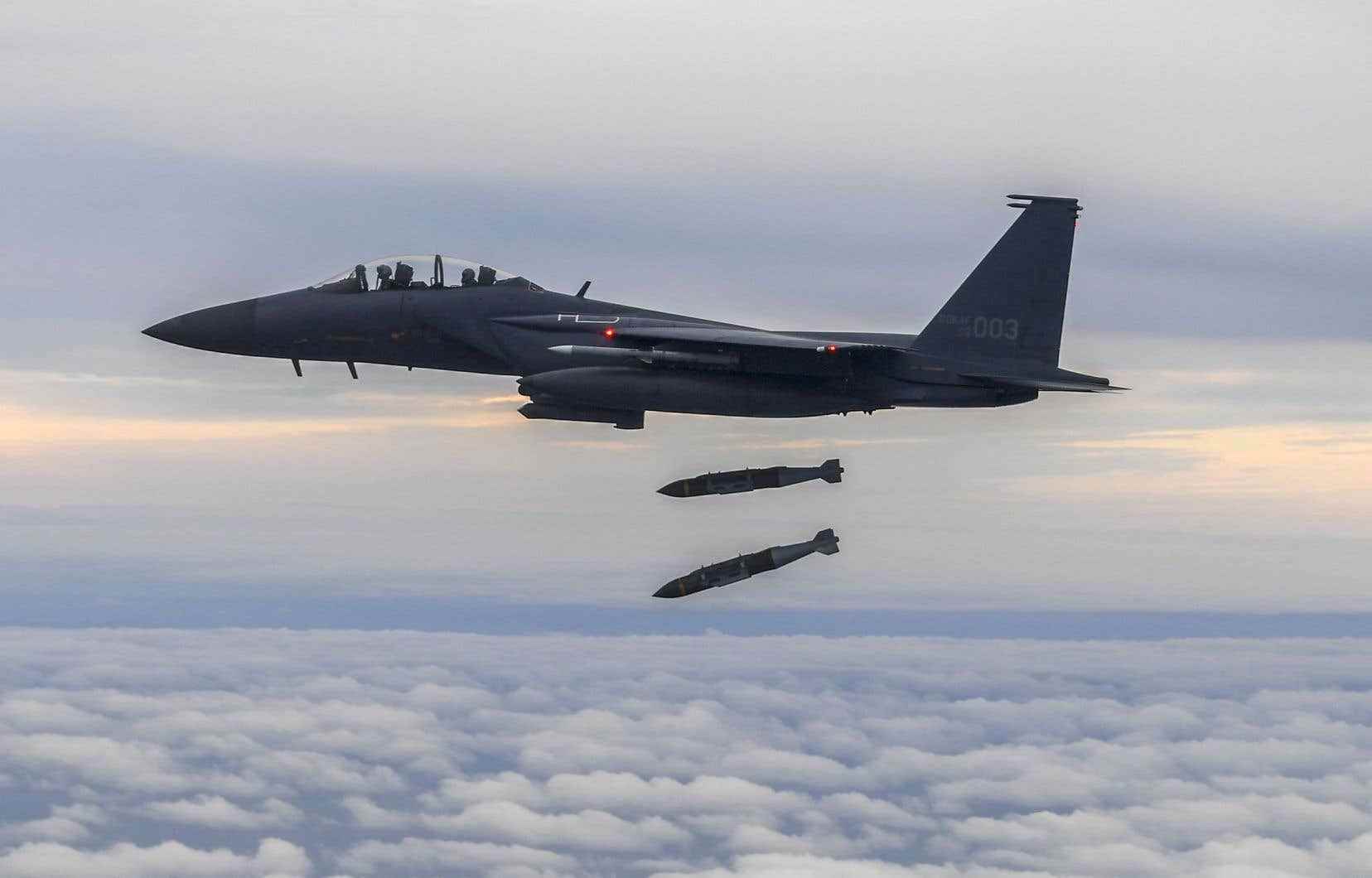North Korea on Tuesday fired an intermediate-range ballistic missile (IRBM) that flew over Japan, the first since 2017, leading Tokyo to activate its warning system and ask residents of certain regions to take shelter. .
Pyongyang’s last missile launch over Japan was in 2017, at the height of the ‘fire and fury’ period in which North Korean leader Kim Jong-un and the then US president , Donald Trump exchanged insults.
Tokyo confirmed the shooting, activating – unusually – a public alert system and asking residents of two regions in northern Japan to take shelter if possible.
” Provocation “
“A ballistic missile probably passed over our country before falling into the Pacific Ocean. This is an act of violence that follows the recent repeated firing of ballistic missiles. We strongly condemn it,” Prime Minister Fumio Kishida told reporters.
On Tuesday, the South Korean military said it detected the firing of an intermediate-range ballistic missile, which flew over a distance of about 4,500 km at an altitude of 970 km, at a speed close to Mach 17, flying over Japan to the east. At first, she had mentioned a “medium range” missile.
“The exact details are being thoroughly analyzed in cooperation with the United States and the international community,” the South Korean Joint Chiefs of Staff said in a statement.
Seoul called the firing a “provocation” that “clearly violates universal principles and United Nations standards.”
In the process, Washington promised, after consultation with Japan and South Korea, a “robust” response to this firing. US National Security Advisor Jack Sullivan also said he wanted to reaffirm his country’s “ironclad commitment” to its Asian allies.
In response to the Pyongyang fire, South Korean and U.S. warplanes conducted precision strike drills on Tuesday, Seoul said, with two South Korean warplanes dropping bombs on a virtual target in the Yellow Sea. Korean F-15K.
These exercises aimed to demonstrate their ability “to conduct a precision strike on (the sites at) the origin of the provocations”, described the joint staff of Seoul.
About 28,500 American soldiers are present in South Korea to help protect them against the North.
According to Japanese Defense Minister Yasukazu Hamada, the device used by Pyongyang could be a Hwasong-12 missile, used by the regime the last two times a missile flew over Japan. If so, this shot would mark a new distance record, with Tokyo estimating it at around 4,500 km.
North Korea, which has nuclear weapons, has this year intensified its plans to modernize its armaments.
In particular, it launched an intercontinental ballistic missile (ICBM) for the first time since 2017 and reviewed its legislation to make its status as a nuclear power “irreversible”.
Last week, it fired four short-range ballistic missiles.
“Overtaking South Korea”
The firings came as Seoul, Tokyo and Washington on Sept. 30 conducted trilateral anti-submarine drills for the first time in five years, days after U.S. and South Korean naval forces conducted large-scale maneuvers. wide off the peninsula.
North Korea, which is subject to UN sanctions for its weapons programs, generally seeks to maximize the geopolitical impact of its tests by choosing the moment that seems most opportune.
“If Pyongyang fired a missile over Japan, it could represent a significant escalation from its recent provocations,” said Leif-Eric Easley, a professor at Ewha University in Seoul.
“North Korea always starts with a low-level provocation and gradually raises the level to attract global media attention,” said Go Myong-hyun, a researcher at the Asan Institute for Policy studies.
“By launching the missile over Japan, they show that their nuclear threat is not just aimed at South Korea. »
South Korean and American officials have been warning for months that North Korean leader Kim Jong-un is preparing to conduct another nuclear test.
It could be conducted after the next congress of the Chinese Communist Party which begins on October 16, several senior officials of the American command for Asia-Pacific indicated this weekend.
The fact that North Korea has a nuclear weapon is all the more worrying because, unlike other nuclear powers, the Pyongyang regime does not consider this kind of weaponry as a deterrent that will never to be used.
Pyongyang has tested atomic bombs six times since 2006. The latest and most powerful test came in 2017, with an estimated yield of 250 kilotons.
